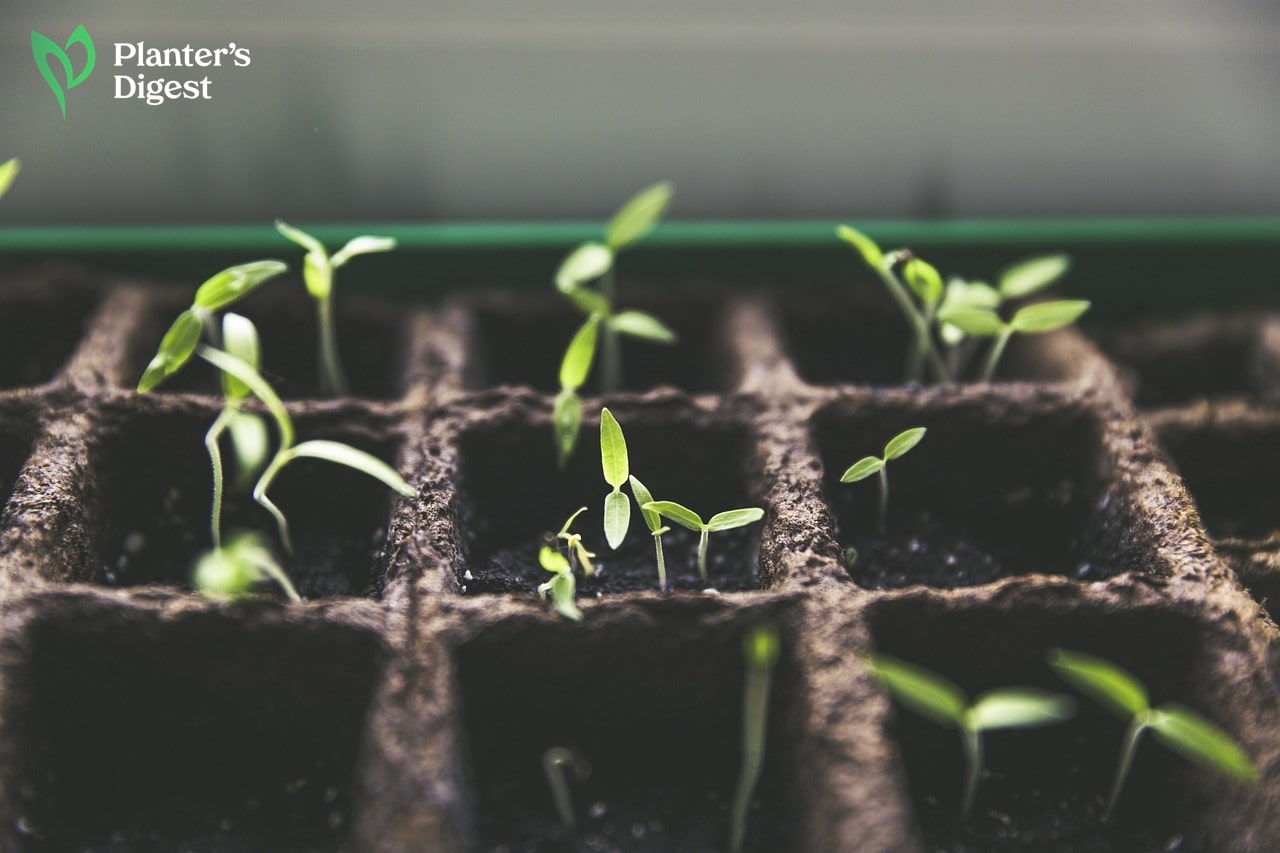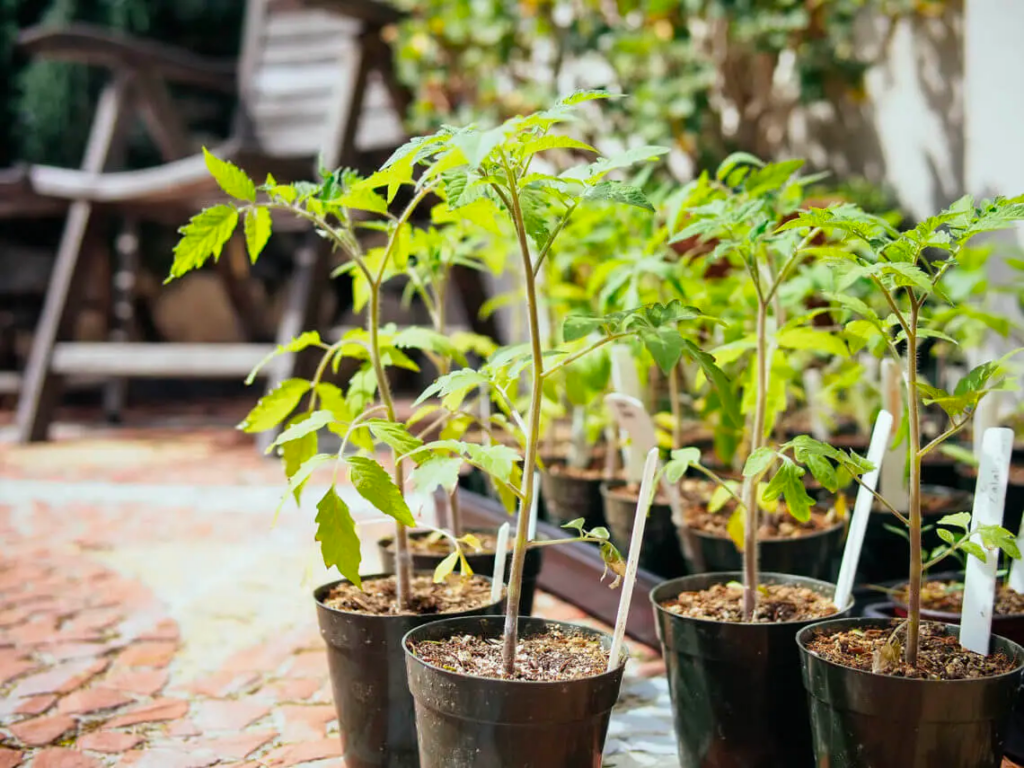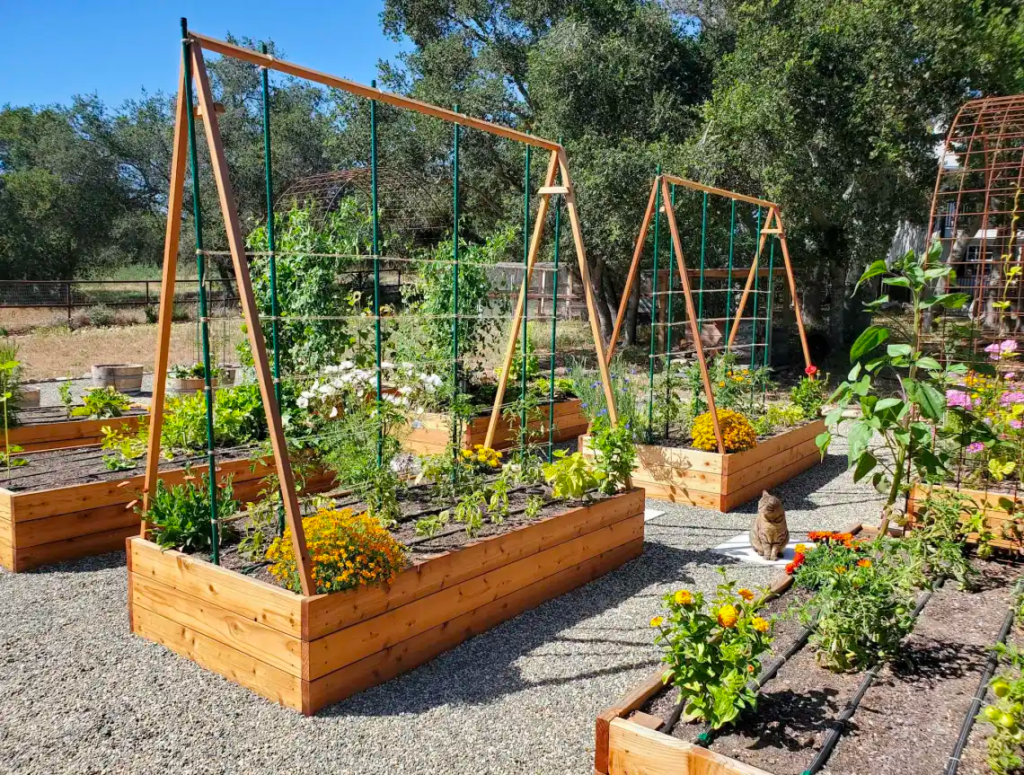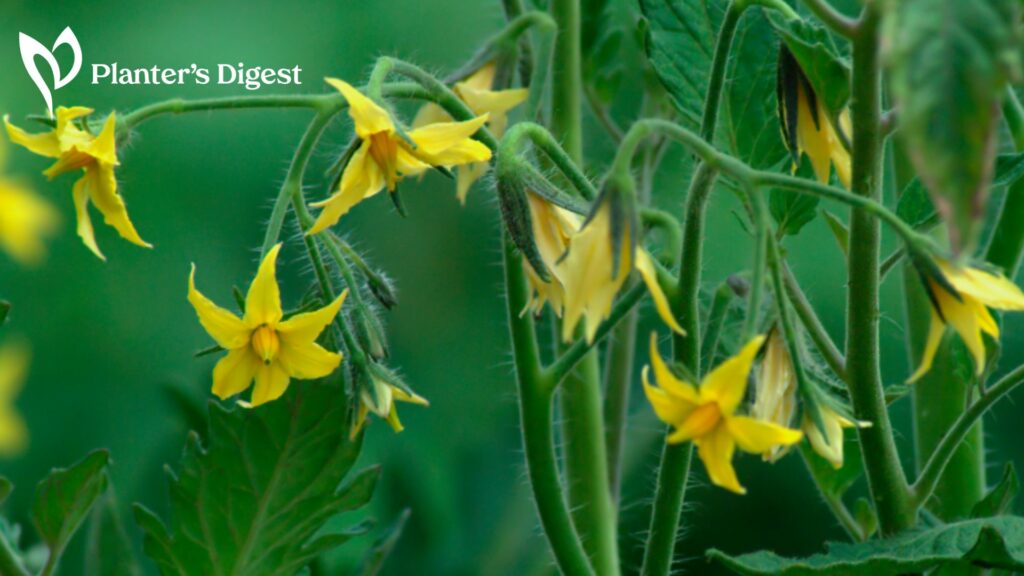
Do you like to move it, move it? We’re here to help!
Just to be clear, by “it,” we mean your tomato plants.
Transplanting them is a crucial moment in their plant life. You’ll surely reap a bountiful harvest of plump and juicy tomatoes when done correctly.
Check out this easy step-by-step guide on transplanting your dear tomato plants!
How to Transplant Tomato Plants
1. Harden off the tomato plant.

| Difficulty | Easy ●○○○○ |
| Duration | 1 to 2 hours |
| Things You Need | Tomato seedling |
Before transplanting, your tomato seedlings have been heavily sheltered. They’re used to greenhouse or controlled conditions like ideal lighting and minimal wind breezes.
To prepare the tomato plants for the outside world, you’ll have to harden them off. Hardening off means gradually allowing the tomato plants to get used to direct sunlight, temperature changes and wind breeze outside.
This process takes one to two weeks; and the longer you allow the tomato plant to adjust, the stronger and healthier it’ll be in the long run.
During the hardening period, expect your young tomato plants to thicken their stems and quickly grow stronger leaves and roots.
| How To Do 1. Place your tomato seedling in a shady area on the first day for one hour. Then, bring them back inside. 2. Place the tomato seedling in the exact location for 2 hours the next day. Then, bring them back inside. 3. Continue taking them in and out every day. Gradually increase the outside exposure of the tomato seedling until you finish two weeks. |
2. Plant in a sunny location.

The planting location is key to growing ripe and healthy tomatoes; in tomatoes’ case, they thrive best in sunny places.
Plant your tomato seedlings where they can get 8 to 10 hours of direct sunlight daily for maximum fruit production.
P.S. Southern exposure is the gold standard for choosing a sunny location for your tomato plant. This ensures that tomatoes get gentle morning and early afternoon sun, and are protected from the harsh afternoon sun rays in the late afternoon.
3. Amend the soil.

| Difficulty | Easy ●○○○○ |
| Duration | 30 minutes to 1 hour |
| Things You Need | • Digging fork • Soil • Compost |
As heavy feeders, tomato plants love organically rich, fertile, well-drained soil. They prefer slightly acidic soil with a pH between 5.5 and 7.5.
If you’re planting them in a raised bed or a container, we recommend using rich, loamy and well-drained outdoor potting soil. On the other hand, if you’re planting tomato plants directly to the ground, use well-drained sandy loam soil.
Now, after choosing the right type, amend your soil to make sure the tomato plants will get all the nutrients they need to thrive. Ideally, you should amend the soil about one month before planting.
If you’re using sandy soil, add compost to increase organic material in the soil. For clay soil, add coconut coir to lighten the soil and improve airflow.
If the soil is too alkaline, add a soil acidifier and compost to meet the ideal pH between 5.5 and 7.5.
Oh, and don’t compact the soil. Tomato plants need light and well-aerated soil for optimum growth.
| How To Do 1. Loosen the soil at least 8 inches deep using a digging fork. 2. Spread 2 to 3 inches of your chosen compost over the soil’s surface. 3. Mix the soil and compost thoroughly. |
4. Prune the tomato seedlings.

| Difficulty | Easy ●○○○○ |
| Duration | 10 to 30 minutes |
| Things You Need | • Tomato seedling • Pruning shears |
Pruning your tomato seedlings before transplanting helps the plant focus all its energy on settling in its permanent home.
By removing the low-lying set of leaves and flowers, the plant will direct its energy into growing stronger stems, leaves and roots.
Don’t worry about removing the flowers because the plant will surely flower again. At this point in its life, it just has to focus on growing stronger plant parts in a bigger location.
| How To Do 1. Trim the 1 to 3 sets of leaves from the bottom of the tomato plant. 2. Make sure to leave 2 to 3 sets of leaves above the soil line. 3. Also, pinch off flowers that have formed on the seedling. |
5. Provide adequate planting space for tomatoes.

Like every relationship, you should also give your tomato plants enough space.
Once planted, tomatoes will sprawl horizontally and vertically, so you should anticipate their need by providing ample space for other plants and their roots to grow underground.
A rule of thumb is to plant your tomato seedlings at least 2 feet apart. This will give proper air circulation for the plants and prevent pests and plant diseases.
Being heavy feeders, ample space will also prevent conditions where the plants compete for soil nutrients, causing nutrient deficiency and stunted growth and fruit production.
Remember, your tomatoes also love the sun, so if they’re planted too closely with other plants, they might get only partial shade conditions, stunting their growth and fruit and flower development.
6. Plant your tomatoes deep in the soil.

| Difficulty | Easy ●○○○○ |
| Duration | 30 minutes to 1 hour |
| Things You Need | • Tomato seedling • Measuring tape • Gardening gloves • Soil • Compost |
Now that all the ideal planting conditions are set, it’s time to plant the tomato seedlings in their permanent home.
A fun fact about tomatoes is that they have adventitious roots. This means that their stems can grow our roots as long as they’re kept moist and buried.
Tomato plants grow best when planted deep in the soil, as it helps them develop more roots. Deep planting gives them more nutrients from the soil resulting in healthier growth and higher tomato yield.
An extensive root system also helps the tomato plant absorb more nutrients and water. It even protects them from frost and cold weather and helps them stay upright amid strong winds.
| How To Do 1. Measure the height of your tomato plant. 2. Dig a hole that is two-thirds of the height of the tomato plant, including the root ball. 3. Place the tomato seedling in the hole. 4. Loosen the roots of the plant. 5. Fill the hole with soil until below the bottom set of healthy leaves. |
7. Feed the tomato plant.

After transplanting, you’ll have to keep providing the necessary nutrients to your tomato plant.
But keep in mind that tomatoes need different nutrients at every stage of their life. Here’s a breakdown of how every macronutrient benefits the plant.
| Nitrogen | Boosts foliage growth |
| Phosphorus | Promotes root and fruit development |
| Potassium | • Helps the plant grow fruits and flowers • Boosts photosynthesis |
8. Mulch the tomato plant.

| Difficulty | Easy ●○○○○ |
| Duration | 15 to 30 minutes |
| Things You Need | • Tomato seedling • Straw • Grass clippings • Wood chips • Eggshells • Crushed leaves |
Mulch is another way to protect the tomato plant from excessive heat. By adding a thick layer of mulch above the soil, the soil retains its moisture as it prevents evaporation of water during hot days.
It will also prevent weed growth and splashing of water on the low-lying leaves of the plant that can attract bacterial and fungal growth, causing tomato plant diseases.
| How To Do 1. Choose an organic material to use as mulch. You can use straws, wood chips, grass clippings, egg shells or crushed leaves. 2. Apply a layer of mulch 2 to 3 inches thick above the soi. |
9. Water the young tomato plant.

After transplanting, the young tomato seedlings need as much water as possible to help boost their root system’s development. So, water them once a day during the first two weeks.
Later on, the mature tomato plant will need 1 to 2 inches of water weekly. Watering them in the morning is best to keep the soil moist throughout the day.
Water the tomato plants directly onto the roots to prevent splashing of water on the bottom leaves. This will help prevent bacteria or fungal growth that cause tomato plant diseases.
10. Provide support to the tomato plant.

| Difficulty | Easy ●○○○○ |
| Duration | 1 to 2 hours |
| Things You Need | • Wire cage • Wooden stake • Wire, string or twine |
Expect that your tomato plant will thrive tall. So, you should set up stakes or cages as early as transplanting to train your tomato plant toward stronger vertical growth.
Providing a sturdy support structure will also straighten its stem and prevent it from breaking off when it starts bearing tomatoes on its vines.
Here are the different ways to support your tomato plant.
| How To Do: • Wire cages 1. Ensure the cylindrical cage mesh has holes at least 2 inches wide. 2. Place the wire cage around the tomato plant gently. 3. Drive a stake in the middle of the cage. 4. Wrap the central stem around the wire cage. 5. Wrap each tomato vine on the sides of the cage. 6. Use soft twine, yarn or string to keep the vine in place. • Wooden stakes 1. Prepare a wooden stake measuring 2 inches thick and 7 feet tall. 2. Do not use treated or coated wood to avoid contaminating the tomato plant or soil. 3. Drive the stake more than 1 foot into the ground. 4. Wrap the vines of the tomato plant to the stake. 5. Use soft twine, yarn, or string to keep the vine in place. • Trellises 1. Use a wood or metal stake measuring 6 to 8 feet tall. 2. Drive in the stake every 10 to 15 feet within the row. 3. Connect the posts at the top using a strand of wire. 4. Attach one string above each tomato plant. 5. Leave the vines to fall naturally to the ground. 6. Wrap the tomato plant around the trellis using a soft twine, string or yarn. |
FAQs on Transplanting Tomato Plants
Tomato plants should be 3 to 4 inches tall before being transplanted.
The best time of day to transplant tomatoes is in the late afternoon, because the air and soil temperatures have already cooled down and the sunlight will not scorch the young plants.
You can transplant tomato seedlings with flowers. However, it’s best to pinch them off before planting them in the ground so the plant can focus its energy on developing roots, leaves and stems in the early stage of its plant life.
Burying half of the tomato seedling will help it grow a more robust root system, giving it more access to water and nutrients for healthier tomato plant growth.
A tomato plant can be transplanted 2 to 3 times before permanently placing them in your garden. Just bury the stem every time you transplant to avoid leggy growth.




